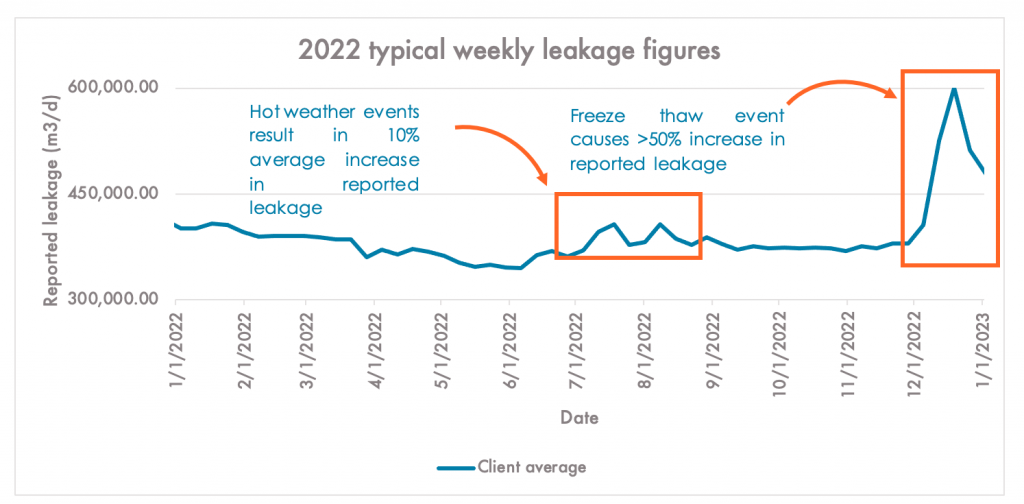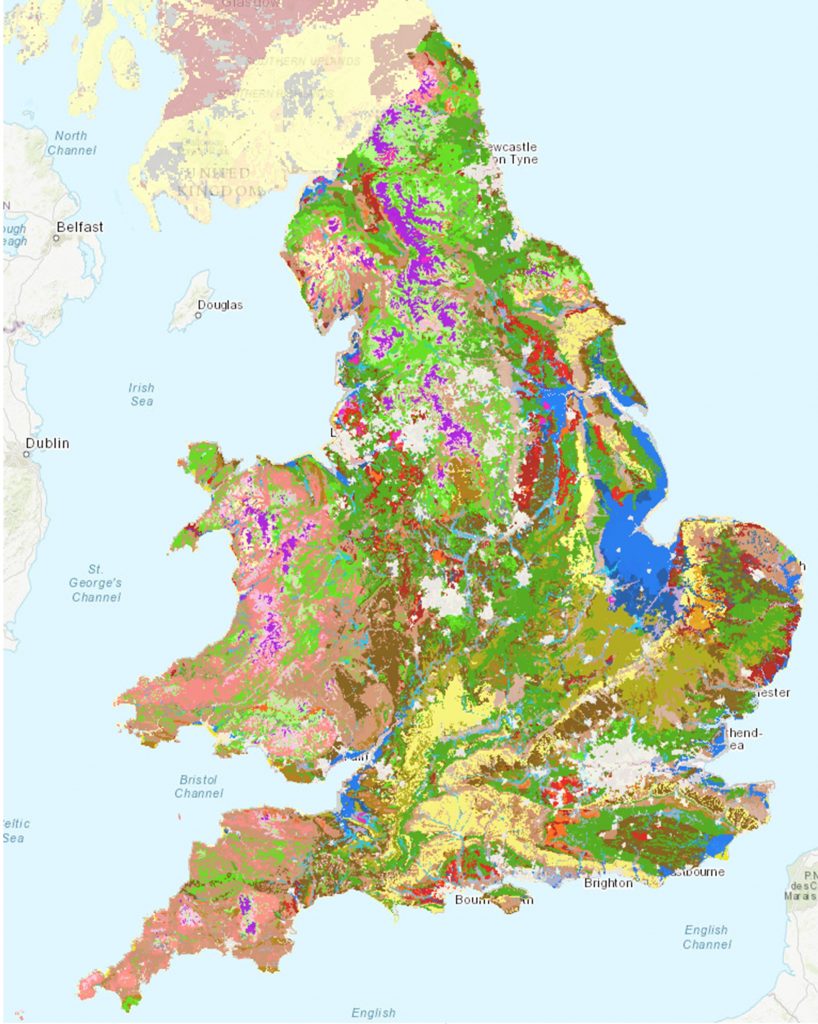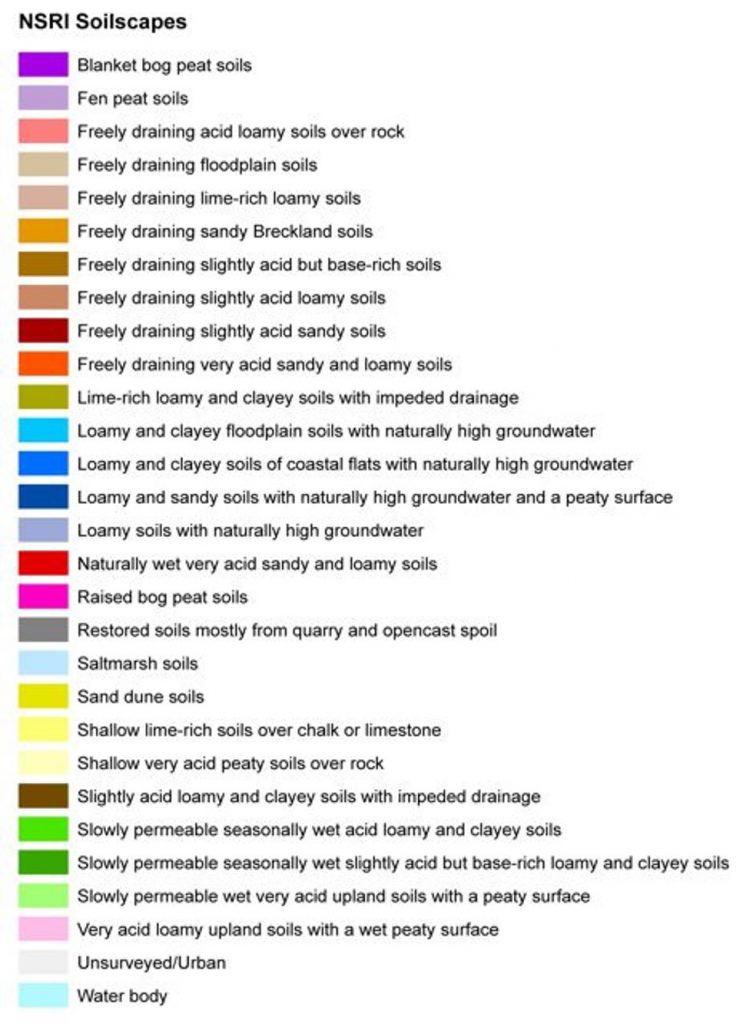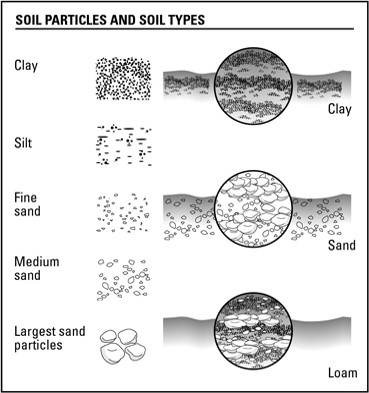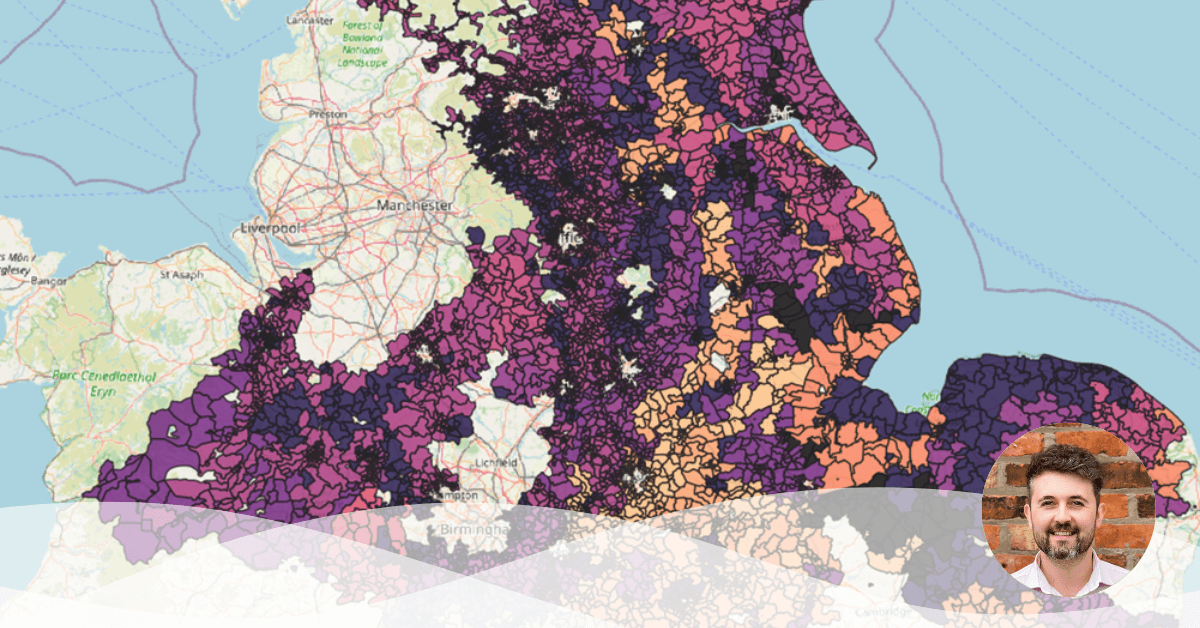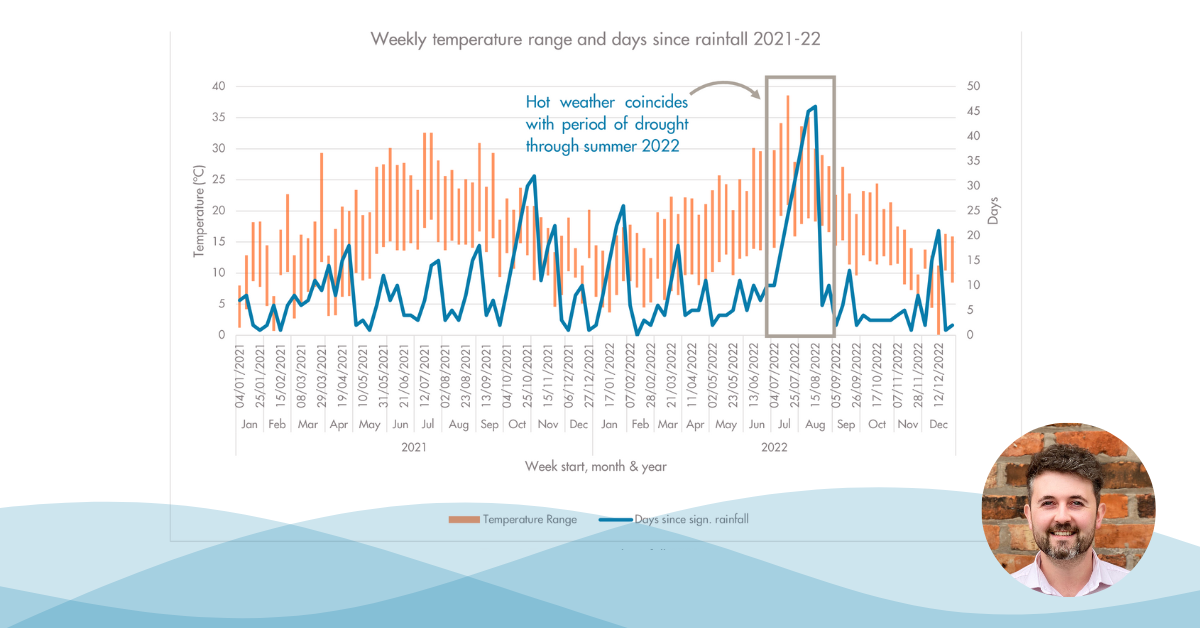Figure iv: typical soil particles and soil types (Credit: agriculturistmusa.com)
How does this affect water networks?
Unfortunately for water companies, pipes are installed underground and so interaction with the soil is unavoidable. If a pipe has been installed into a particularly clayey soil, then it may be subject to higher levels of stress than if it were installed into loamy or sandy soils. Clayey soils are affected by both extreme hot and dry weather as well as extreme wet and cold; during freeze thaw events the water particles in a waterlogged clay soil will expand and put external pressure onto the pipe. The pipe could also be moved by heave which will create even more strain, especially at the fittings. Whilst any bursts caused during the freezing may be minimalised by the expanding soil, on thawing this pressure will be alleviated and allow the leak to grow.
During drought conditions, clayey soils will eventually become dry and subside as there is no moisture, leading to cracking which deforms the deeper soil structure. This can put stress onto the water network as heavy pipes may drop as the water table falls, or become strained when the surrounding soil is deformed. Again, there is a risk that bursts may occur during the initial deformation during a drought, along with a further risk once the soil becomes wet after the drought ends. It may be in soils such as these that the 10% increase in leakage during the summer was mainly found.
Sandy soils tend not to experience as must deformation caused by climate as they drain quickly and have a looser structure. However, there is a risk that during burst events, the leakage from the pipe can wash away the looser soils and create hollows that over time, the pipe could subside into.
How might water companies use soil data to reduce the impact of climate related bursts?
It seems inevitable that extreme climatic conditions will become more prevalent in the years to come. Having knowledge of local soil types could be useful to UK water companies, as if a portion of network is installed in clayey soils, then this will increase the likelihood of bursts occurring during droughts and freeze thaw conditions, especially in rural areas where the mains are less likely to be covered in concrete/tarmac. By understanding where pipes are more likely to be strained and burst, there could be an improvement made to the incident planning process, which may help reduce customer supply interruptions. By monitoring climate data and focussing on these areas before events occur water companies could reduce the amount of reactive leakage work as proactive measures could be put in place.
Water companies can also track the soil moisture deficit (SMD) values in their areas to understand which DMAs could be most at risk. SMD is calculated as:
SMD = Rainfall – (Run-off + Demand + Evapotranspiration)
The Environment Agency publishes monthly reports on the water situation across England with detailed rainfall, groundwater and projected climate data that could be used as an early warning system. They also produce useful SMD maps which show the level of soil moisture deficit across the UK.
Conclusion
As part of my ongoing personal training at SME Water, I have focussed my annual assignment on the possible relationship between underlying soil types and burst rates during hot weather events like the summer of 2022. Whilst there have been many scientific investigations into how soils behave in droughts and the impacts this can have on farming and engineering, I am hoping to be able to come up with a simplified pragmatic way of calculating the possible effect on DMAs depending on which soils are present and what the climatic conditions are.
If the results are promising I am hoping that this may be a future component or flag that could be used as part of our Paradigm model, helping to distinguish where a DMA may experience higher or lower leakage during certain climatic events. Whilst predicting burst leakage is and may always be a dark art, I think for UK water companies to continue to drive down leakage figures, they will need to have a good understanding of all aspects of their network including the environment in which it has been installed.

